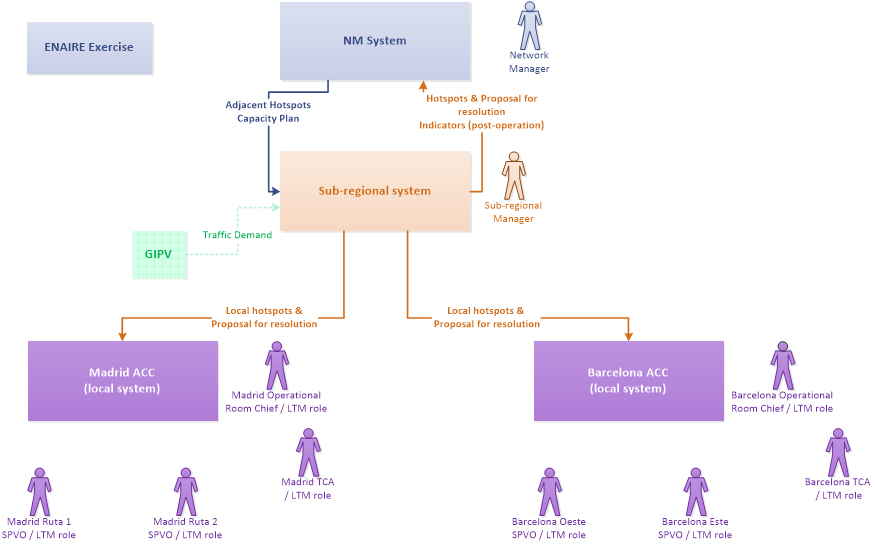HARMONISED AIRSPACE MANAGEMENT AT LOCAL LEVEL
The Single European Sky calls for cost-efficient services delivered in a harmonised manner, supported by open standards. Air navigation service providers (ANSPs) operate in the context of a collaborative network, using the network management function and local demand capacity balancing (DCB) capabilities to deliver efficient airspace management for civil and military airspace users.
The sub-regional demand capacity balancing (DCB) service aims to improve airspace management at sub-regional level and simplify tactical interaction between stakeholders. This common service assumes that it can optimise the operation of a highly integrated part of the network. It enables ANSPs to balance airspace demand against available capacity of the different stakeholders, while reducing workload between the region and local actors. The service is active during the whole planning phase, from up to a year before the time of operation to just before the execution phase (generally two hours before the time of active operation), within the sub-regional airspace. The primary focus is the window encompassing pre-tactical to just prior to activation. The solution is focused on the technical aspects of such service.
The solution can be applied by several area control centres, or several ANSPs, and supports the local traffic manager by developing plans to manage demand versus capacity within the scope of the sub-region. It uses existing operational processes and services, reorganising them to provide efficiencies, for example through the provision of a focal point for several ACCs, therefore reducing the number of point-to-point connections. The service provider collects inputs from different stakeholders about demand, capacity, military requirements and weather to determine optimal capacity balancing for the region.
Two SESAR validations showed the solution to be technically feasible: it improves cost-efficiency and can be considered as ready to move to industrialisation with some additional research into information flows, particularly the ability to feed common service data back to the regional network manager. However, the operational assumptions taken in the business model (i.e. processes, roles and responsibilities between regional/sub-regional DCB levels) are still to be validated before actual deployment. SESAR also recommends development of a standard to ensure interoperability using a common interface.
The solution is available for industrialisation.
BENEFITS
Increased cost efficiency

